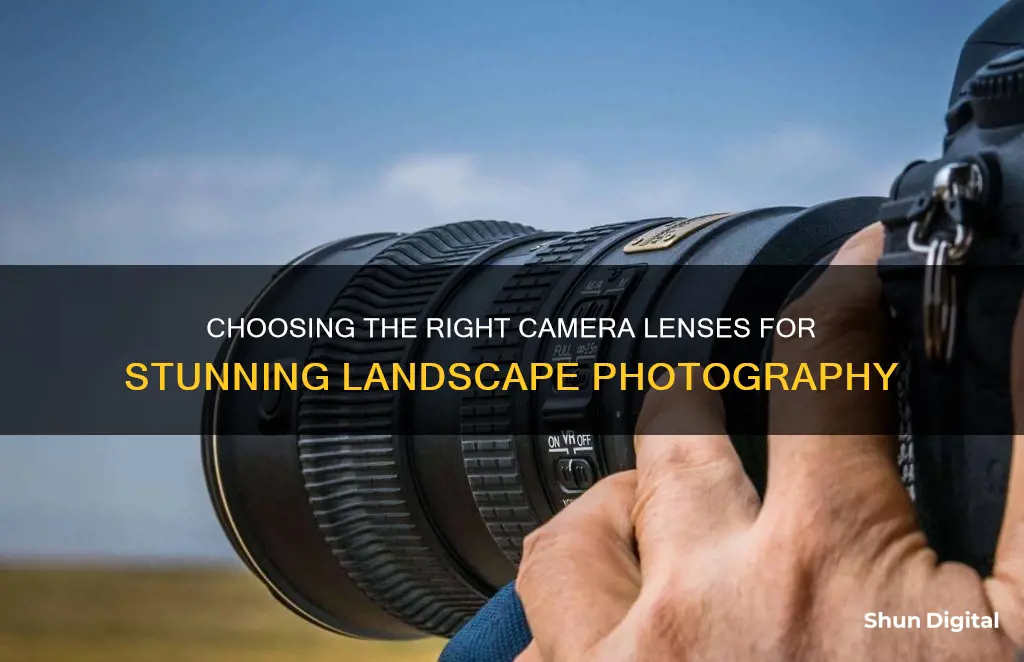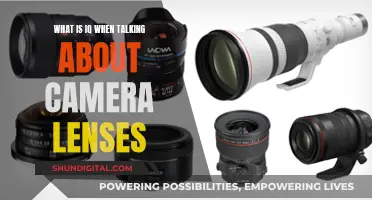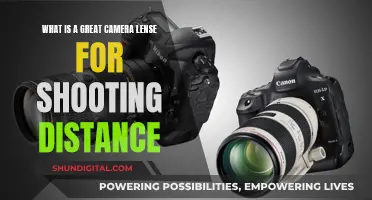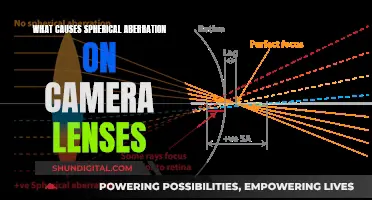
Choosing the right camera lens for landscape photography is an important decision, as it can make all the difference in bringing out the depth, details, and vibrancy of a scene. The lens you select will influence the creative side of your photography more than any other piece of equipment.
There are a few different types of lenses that lend themselves to landscape photography, and each has its own benefits. Wide-angle lenses are the most popular choice, as they offer a broader field of view, allowing you to capture more of the landscape within a single frame. Telephoto lenses, on the other hand, are perfect for isolating specific elements within a larger landscape, such as a single mountain peak or an interesting rock formation. Standard lenses, which have a focal length of around 35mm to 70mm, are also excellent for capturing a perspective similar to how the human eye sees a scene.
When choosing a lens for landscape photography, it's important to consider factors such as compatibility, focal length, minimum focusing distance, aperture, image stabilization, weight, and dimensions. It's also worth noting that prime lenses, which have a fixed focal length, are known for their excellent image quality, sharpness, and brightness. They also tend to have faster maximum apertures, making them a good option for low-light landscapes.
Ultimately, the best lens for landscape photography will depend on your personal style, the specific scenario you're shooting in, and the narrative you wish to express through your images. Experimenting with different lenses and settings will allow you to discover unique perspectives and elevate your photographic creativity.
| Characteristics | Values |
|---|---|
| Wide-angle lenses | 24mm and below |
| Standard lenses | 35mm to 70mm |
| Telephoto lenses | 70mm and above |
| Prime lenses | Fixed focal length |
| Zoom lenses | Variable focal length |
What You'll Learn

Wide-angle lenses for capturing vast landscapes
Wide-angle lenses are the most closely associated with landscape photography, with many photographers referring to them as 'landscape lenses'. They are popular with landscape photographers because their extensive field of view makes it possible to capture sweeping vistas.
Technically, a lens is considered wide-angle if the field of view is greater than 65º, which equates to a focal length of 35mm on a full frame. However, many photographers would only consider lenses of 28mm or wider to be 'true' wide-angles.
Wide-angle lenses are perfect for capturing vast skies, rolling hills, and sweeping horizons without sacrificing any significant elements of the composition. They are also great for emphasising the foreground and stretching the background, adding a three-dimensional quality to images. This makes elements in the frame appear larger and more prominent, drawing viewers into the scene and making them feel part of it.
When using a wide-angle lens, it's important to pay attention to the placement of the main subject and the elements within the frame. Utilise the rule of thirds or leading lines to guide the viewer's eye through the image.
- Canon EF 16-35mm f/2.8L III USM (DSLR)
- Nikon AF-S Nikkor 14-24mm f/2.8G ED (DSLR)
- Sony FE 16-35mm f/2.8 GM (Mirrorless)
- Fujifilm XF 10-24mm f/4 R OIS (Mirrorless)
- Nikon Z 14-30mm f/4 S (Mirrorless)
- Canon RF 15-35mm f/2.8L IS USM (Mirrorless)
Camera Lenses: Tax Benefits and What Qualifies as 'Listed Property
You may want to see also

Telephoto lenses for isolating specific elements
Telephoto lenses are an excellent tool for landscape photography, offering a unique perspective and the ability to isolate specific elements within a scene. With their longer focal lengths, typically 85mm or greater on a full-frame camera, telephoto lenses provide a range of creative benefits for landscape photographers. Here are some key advantages of using telephoto lenses for isolating specific elements in landscape photography:
Compression and Isolation
Telephoto lenses excel at compressing the elements within a landscape, bringing distant objects closer together and creating a sense of intimacy and harmony. This compression effect allows photographers to isolate specific elements, such as a distant mountain range, a solitary tree, or wildlife, emphasising their significance and aesthetic appeal. By using a telephoto lens, you can achieve a completely different result compared to a wide-angle lens, as it narrows in on the subject and eliminates distractions, drawing attention to the beauty of the isolated element.
Capturing Distant Details
Telephoto lenses are ideal for capturing intricate details that may be missed by wider focal lengths. They bring distant details into sharp focus, such as the texture of rock formations, the intricacies of foliage, or subtle variations in light and shadow. This capability is especially useful when you cannot get close to your subject or need to capture details from a distance. Telephoto lenses enhance the storytelling potential of your images by revealing the finer aspects of the landscape.
Embracing Minimalism
Telephoto lenses allow you to embrace minimalism in your landscape photography, isolating and emphasising minimalistic elements. For example, a lone tree on a hill in the distance can be captured without the clutter in the foreground, creating a serene and impactful composition. This technique yields powerful and evocative results, as it removes distractions and focuses solely on the essential elements of the scene.
Framing Distant Landmarks
When photographing iconic landmarks or distant natural features, telephoto lenses enable you to fill the frame and create visually compelling compositions. They are particularly advantageous when shooting from elevated or distant vantage points. Telephoto lenses help you capture distant landmarks in their entirety, ensuring they are the focal point of your image without any unnecessary distractions.
Exploring Abstract Landscapes
Telephoto lenses can uncover the abstract beauty hidden within landscapes. They allow you to isolate patterns, textures, and abstract forms within a larger scene, resulting in images that challenge the viewer's perception and evoke a sense of wonder. By focusing on specific details and emphasising their unique qualities, you can create abstract landscape photographs that stimulate the imagination.
Enhancing Sunrise and Sunset Shots
Telephoto lenses are ideal for enhancing sunrise and sunset photography. They bring the vibrant colours of the sky, the sun's rays piercing through the fog, or a small section of the landscape dramatically illuminated by golden light closer to the viewer. This magnification effect intensifies the visual impact of these magical moments, creating breathtaking landscape images.
Creating Mystery
Telephoto lenses allow you to pick out specific vignettes from a larger scene, creating an air of mystery and intrigue. Even in popular locations with many other photographers, you can use a telephoto lens to capture unique perspectives that differ from the norm. This technique enables you to capture shots that stand out and showcase the location from a fresh and unexpected viewpoint.
In conclusion, telephoto lenses are a powerful tool for landscape photographers, offering the ability to isolate specific elements and create captivating compositions. They provide a different perspective, emphasising the beauty and intricacies of nature. By choosing the right telephoto lens and mastering the associated techniques, you can elevate your landscape photography and capture stunning images that leave a lasting impression.
Dual-Lens Camera: Capturing the World in Two Views
You may want to see also

Standard lenses for a natural perspective
Standard lenses, also known as normal lenses, are those that have an angle of view that closely mimics that of the human eye and hence produces images that appear "natural" to viewers. They are neither wide-angle nor telephoto lenses.
Standard lenses typically range from 35mm to 70mm and are excellent for capturing a perspective similar to how the human eye sees a scene. They are versatile and can be used in various photography scenarios, not just landscapes.
- Canon EF 24-70mm f/2.8L II USM: This lens offers a versatile focal range, allowing you to capture beautiful wide-angle images at 24mm and intimate landscapes or close-up scenes at 70mm. It is a pricey option, but the L-lens build quality makes it great for lengthy outdoor adventures.
- Canon EF 24-105mm f/4L IS II: This lens is a versatile option that can be used for landscapes, street scenes, and even portraits. It offers a wider focal range than the 24-70mm lens, allowing you to zoom in on specific landscape features and create more intimate or abstract images. It is also reasonably priced.
- Nikon AF-S 50mm f/1.4G: This Nikon lens is a good choice for a standard "walkabout" lens. It produces images with a natural-looking perspective and parallax, excluding any foreground elements and drawing the viewer's eye towards the background.
- Canon EF 24-70mm f/2.8L USM II: This lens is another excellent option from Canon, offering superb sharpness across the frame and the added bonus of an f/2.8 aperture for low-light conditions or when you want to create a shallow depth of field. It is slightly heavier than the 24-105mm lens but still lightweight and versatile.
Save Money on Camera Lenses: Smart Shopping Tips
You may want to see also

Prime lenses for low-light conditions
Prime lenses are a great choice for low-light conditions, offering a range of benefits such as discretion, low-light performance, portability, and aesthetics. They are particularly useful for landscape photography, where their wide apertures can help capture dramatic night-time images. Here are some tips for using prime lenses in low-light conditions:
- Calibrate your lenses to ensure accurate focusing in any lighting condition.
- Use a good stance to maintain a stable and secure position when shooting wide-open in low light.
- Refocus constantly to adjust for any body movement.
- Use cross-type AF sensors, which are more dependable in low-light environments.
- Focus and recompose carefully, as this technique can lead to focus plane shift.
- Experiment with focus settings—different settings may work better in different lighting conditions.
- Turn on the focus assist lamp to help with focusing in low-light situations.
- Shoot in burst mode to increase the chances of capturing a well-focused photograph.
- Canon 50mm 1.4—Offers excellent quality at a reasonable price.
- Voigtlander 17.5mm 0.95—A popular choice for Micro Four Thirds format, capable of seeing in almost complete darkness.
- Sigma 30mm 1.4—Delivers beautiful bokeh and is competitively priced.
- Rokinon Cine 35mm 1.5—Features a smooth de-clicked aperture ring and excellent low-light performance.
- Zeiss 50mm 1.4—Renowned for its build quality and image quality, though it comes at a higher price.
- Nikon 50mm 1.4—A fully manual option for those who prefer manual glass.
Adapting EF Lenses to Mirrorless Cameras: A Guide
You may want to see also

Ultra-wide lenses for a dramatic perspective
Ultra-wide lenses are a great choice for landscape photography, offering a dramatically expansive perspective that's perfect for capturing grand vistas, emphasising lines, and adding breathtaking three-dimensionality to your images. Here are some tips for getting the most out of ultra-wide lenses for landscape photography:
- Fill the frame: Avoid leaving too much empty space in your image that doesn't contribute to the composition. Try to include interesting elements in the foreground, middle, and background of your image to create a sense of depth.
- Use a low perspective: Getting down low opens up a whole new world of compositional possibilities, especially with the abundance of new leading lines that can guide the viewer's eye through the image.
- Take advantage of distortion: Ultra-wide lenses can make distant subjects appear smaller. To counter this, try tilting the camera down and placing the subject in the upper part of the frame to take advantage of lens distortion, making the subject appear larger and more impactful.
- Pay attention to the corners: With an ultra-wide lens, it's easy to overlook the smaller details in the corners of the frame. Be sure to check the image preview and zoom in after capturing an image to spot any distracting elements that you may have missed.
- Watch out for vignetting when using filters: While filters can enhance your landscape photography, they can also cause issues with ultra-wide lenses, such as vignetting. Pay attention to the frame of the image and adjust your composition or zoom in slightly to avoid unwanted darkening around the edges.
- Focus stacking: Maintaining sharpness on both near and distant elements can be challenging with ultra-wide lenses. Consider using focus stacking, a technique where you capture multiple images with different focus points and blend them together in post-processing to achieve sharpness from front to back.
The Art of Camera Lenses: Beautify or Uglify?
You may want to see also
Frequently asked questions
The best lenses for landscape photography depend on your personal style, the specific scenario you’re shooting in, and the narrative you wish to express through your images. However, most photographers gravitate towards wide-angle lenses for their ability to capture vast, sweeping vistas. Wide-angle lenses typically have a focal length ranging from 24mm to 35mm, while ultra wide-angle lenses have an even shorter focal length, typically less than 24mm.
Wide-angle lenses offer a broader field of view, allowing you to cram more of the beautiful scenery into your frame. They also offer a wider perspective, portraying the grandeur of landscapes and the sense of being ‘in’ the scene.
Recommended wide-angle lenses for landscape photography include the Canon EF 16-35mm f/4L IS USM, the Nikon AF-S NIKKOR 16-35mm f/4G ED VR, and the Fujifilm XF 10-24mm f/4 R OIS WR.







